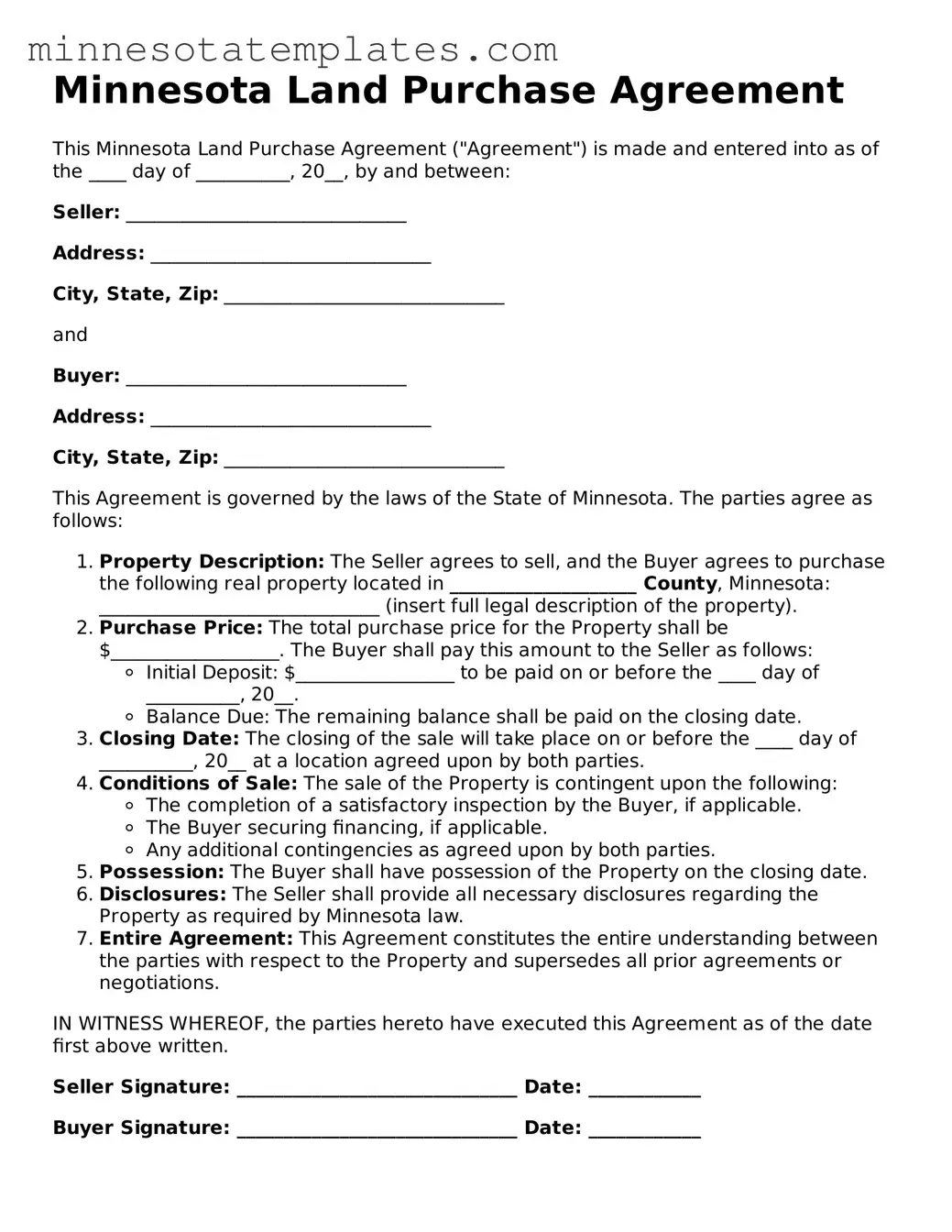The Minnesota Land Purchase Agreement form is a crucial document for anyone looking to buy or sell real estate in the state. This agreement outlines the essential terms and conditions of the transaction, ensuring that both parties are on the same page. Key aspects of the form include the purchase price, property description, and closing date, which are vital for establishing the framework of the sale. Additionally, the agreement addresses contingencies, such as financing and inspections, providing a safeguard for buyers and sellers alike. It also specifies the responsibilities of each party, including any disclosures required by law. By clearly delineating these elements, the Minnesota Land Purchase Agreement helps to prevent misunderstandings and disputes, fostering a smoother transaction process. Understanding this form is essential for anyone involved in a real estate deal in Minnesota, whether you are a first-time homebuyer or an experienced investor.
